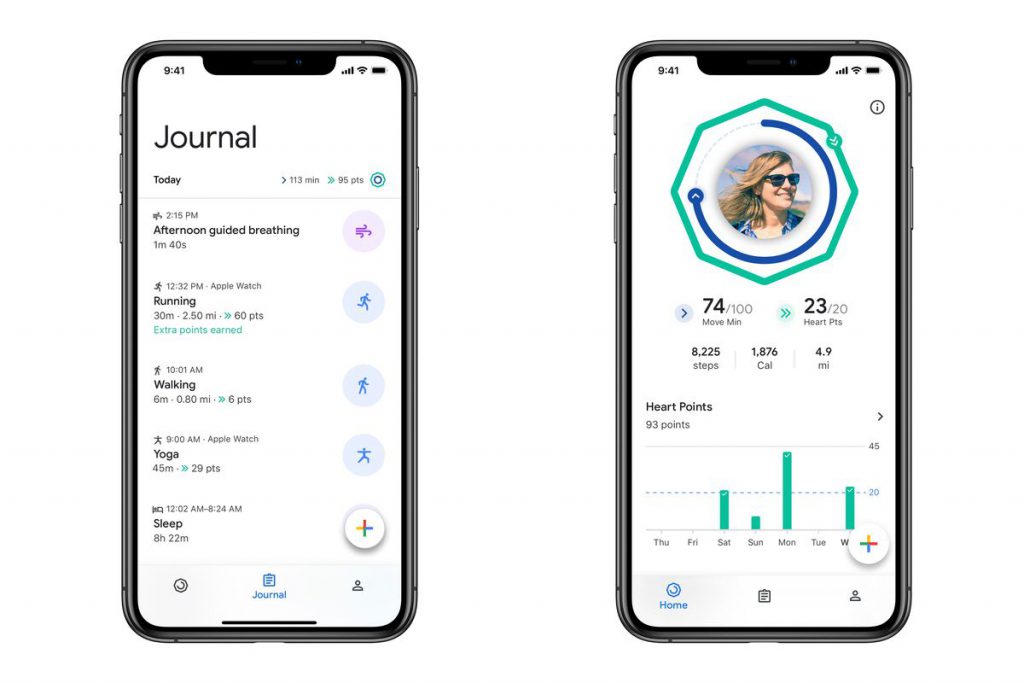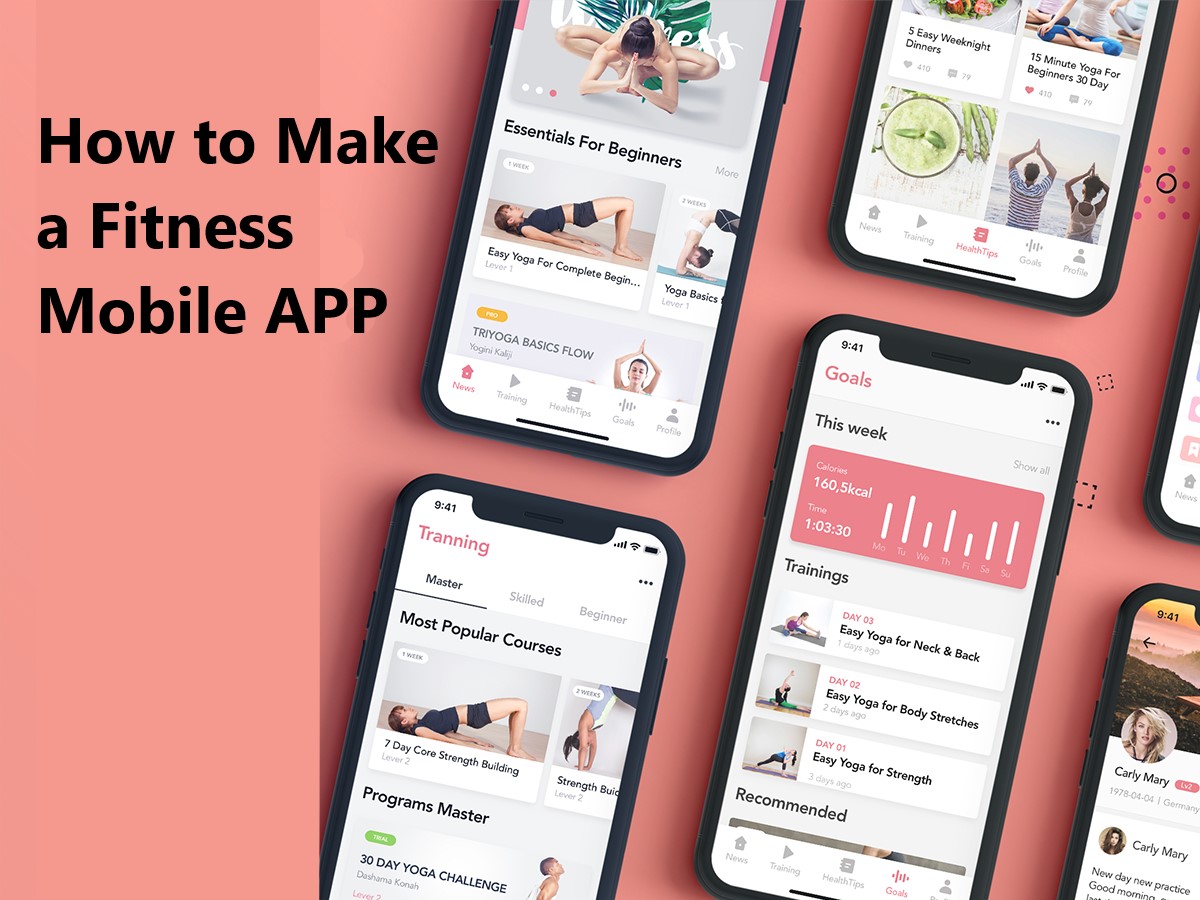People want to stay healthy and fit out of their busy lifestyles. Going to the gym for exercise is what everyone appreciates, but not everyone could stay consistent with it. Sometimes it’s a busy schedule that hinders going to gym and sometimes just laziness.
On the other hand, some people are passionate about their fitness that they don’t want to miss even when they are on vacation. This is where mobile fitness apps come in and offer a simple solution for all these problems or excuses not to workout.
The market for fitness and training apps is constantly growing. According to Grand View Research, the fitness apps market will increase from $2.4 billion in 2018 to $10.9 billion in 2026. This is why popular fitness studios and trainers invest in developing fitness and training apps.
Basic Features of a Fitness Training App
A fitness trainer app includes a few main components, which are:
Basic Exercise
A combination of warm-up and aerobic resistance exercises enables users to build a personal exercise program that helps them achieve better fitness their health and fitness in the most effective way.
High Intensity Exercise
High-intensity exercises help users to perform a workout that takes less time and burn more fat. The more intense exercise steps are added, the fewer time users require to achieve their desired results.
Exercise order
Fitness apps have different levels of fitness programs. They are arranged in a specific order to spread the load across different muscle groups in the body.
Rest Intervals
Among the exercise, there is a small period for rest, which should be customizaably skipable by the user if they don’t want to take breaks between the exercises. This helps tehm customize their exercise time intensity.
Equipment-less
The exercises included in the app needs to be equipment less so tat they can be done easily at home, vacation, or even workplace without requiring exercise equipment or machine.
How to Implement the Main Features in The Workout App?
Personalization of a Fitness App
You can deliver the most efficiency through your fitness app by making it closer to the concept of personal trainers. Using some of the proven methods, you can make an app to replace a human trainer who adjusts workouts depending on body requiremnets, abilities, and personal preferences.
1. Add Questionnaire
A very simple method to create a customizable fitness app is adding an easy and engaging questionnaire that asks for basic users’ information, including their weight, physical activity level, height, and preferable type of sports like run, yoga, cardio training, or meditation. The questionnaire should be closed with the inquiry about the purpose of exercises, i.e., loose weight, maintain weight, or gain weight. For the convenience of international users, add different units of measurement, like pounds or kilograms.
2. User Preference
At the end of a workout, a workout app may ask users to rate the difficulty of the exercises and indicate the preferred ones. Based on this feedback, the smart workout app algorithm calculates the best mix of exercises and rest periods for each user and plans more bespoke future workouts. A mobile app developer can write an algorithm to make an app compile workouts that are according to the users preference. The other way, this can be done by using free or paid algorithms from marketplaces like Algorithmia
3. Custom workouts
For a highly personalized experience, a fitness app should anable users to create customized workouts with their favorite exercises and convenient intervals of rest between exercises.
Counter
The counter or timer is one of the core features of a fitness app. almost every popular fitness app integrate a timer in their app to keep track of the duration of exercise done by the user. Using a timer like CountDownTimer in an Android and NSTimer for iOS is suggestible.
Synchronization with Google Fit and wearable devices
Wearable devices are on a streak these days and enjoying continuous growth for quite a few years. Statista reported that in 2018, global shipments of fitness and activity tracking gadgets brought revenue of $26.43 billion for a total of 172.2 million devices sold globally. This suggests that a large populace of fitness freaks prefer wearables, and it is benefial to integerate those devices in the app.

Syncing an app with smartwatches and fitness trackers makes it easier to monitor the efficiency of exercises. This also helps to collect user data, including steps count, heart rate, pulse, calories burned, and daily activity levels.
There are surplus tools available for integrating fitness apps with wearables. Fitbit, Garmin, and Withings provide APIs for integrating these products with mobile applications.
Use Video player
Video is the most effective way of showing exercise properly to the users. You can instead use use pictures and text descriptions of exercises in the app, but to make your app effective, guide your users with high quality yet short video explanations. By implementing a short video of each exercise, you don’t have to add textual and image guide for your users.
To use a media player in an app for Android, use the
Android MediaPlayer APIs. And, for
apps on iOS devices, you can use AVKit and AVFoundation. This will enable your app to play video files
in the filesystem. Or you can add an external video link to play the video. However,
this could be a little annoying for some users.
Motivation in a Fitness App
To keep the users motivated, some developers implement an achievements feature in their health and fitness mobile apps.
Monetization Model for A Fitness App
Apptopia reported that in the first quarter of 2019, the revenue from the Health & Fitness category apps reached $385 million all over the world. This signifies that there is a high scope of growth in this category of apps. There are a few monetization models that you can use to earn from a fitness or health training app. you can simply use any one of the basic ways of monetization or combine them to create a suitable monetization strategy.
Suggested Read: 10 Brilliant Tips to Market your Mobile App
Paid App
To install a paid app, a user has to pay before installing the app. however, with this monetization model, the app is less likely to be downloaded as many times as it would be when available free. The basic reason for this is that there ae a lot of free competitors of the app exist at the app store, and users get easily inclined toward the free ones. To avoid this, the mobile app development company can make the app free to download and ask for a subscription to sign in. however, if you have a reputed name in the market and you are sure that you will be successful in getting users convinced to have a paid app, then you can go for it.
Freemium
A freemium monetization model is the one in which users download the app and are able to use the basic features for free. However, they are asked to do purchase premium features of the app. further, you can also suggest the app users buy the pro ad-free version, which includes some added features. Its suggestible to entice users by enabling them to uses a few days’ trial period.
Ads
Ads are an old yet effective monetization strategy for free apps. Apps can also combine ads with elements of other monetization models. You can offer your users offer users in-app purchases for removing ads, additional exercises and advice, and upgrade to pro versions.
Final Words
Fitness training apps are a trend and rising every day. If you want to get the most of this wave and become a part of this rapidly increasing industry, you can go for creating an outstanding product and making the right business strategy for it. To be in budget and manage wisely, consult AppVerticals for successful Mobile app development.









